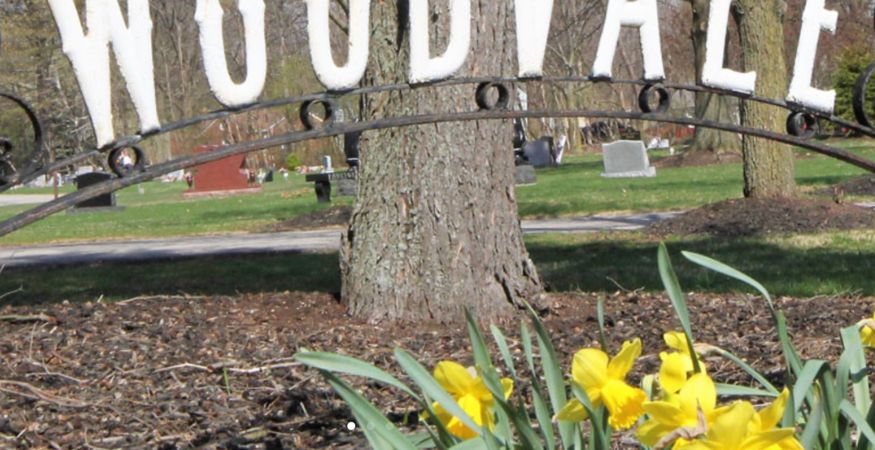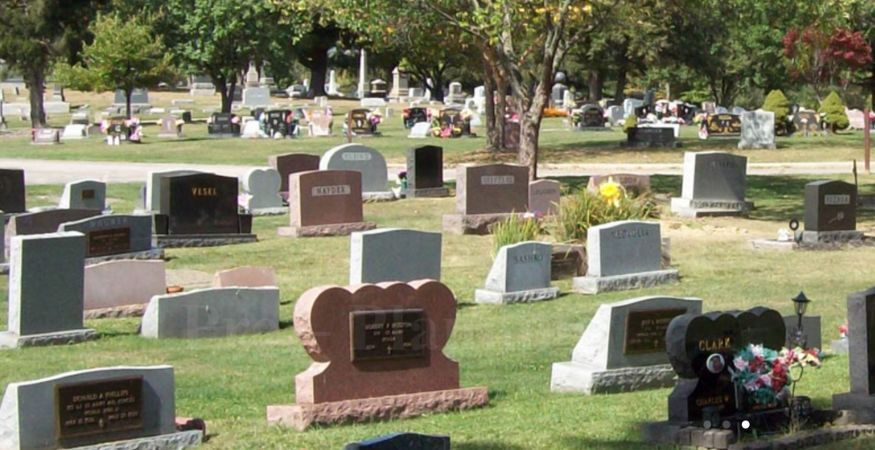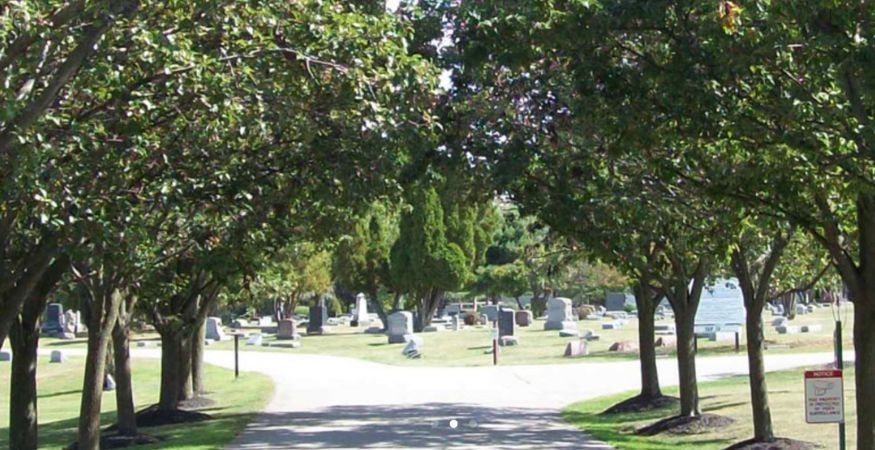City of Durham: Enhancing Cemetery Operations with PlotBox
Learn how municipality, the City of Durham is using PlotBox's cemetery management system to continue to serve their families in the best way...
Learn how PlotBox's grave search portal Everafter is turning genealogy into an enriching and meaningful experience for Woodvale Cemetery and its families.

We're eager to discover more about your cemetery and explore the possibilities of integrating PlotBox seamlessly into your operations.
Let's Talk
Established in the 1850s, it is dedicated to providing its multi-faith communities a range of alternative burial options, in addition to traditional in-ground or cremation burials, with guidance in assisting families in making the right decisions for their loved ones.
We spoke to Director of Operations, Joseph Giaimo on why disjointed, outdated systems were limiting their objective of assisting families in locating the graves of loved ones, and why PlotBox was their best enabler to achieve that.
I oversee all the cemetery’s daily operations, including burials and records, budgets and maintenance. We have an office administrator who helps to take care of all the daily office meetings with families, financials, day to day booking of burials, burial arrangements and so forth. We also have a crew leader who manages the field operations, overseeing 3 field employees.
We are considered a union cemetery because we are a union of two cities that manage the cemetery.
Legally we are Woodvale Union Cemetery, located in the City of Middleburg, but operated within the jurisdiction of the Cities of Middleburg Heights and Berea.
[The cities] appoint trustees, one from each city and one at large, and we provide burial services for everyone - not only the residents, but also for non-residents. We're non-denominational, so we market throughout the surrounding communities and draw families from all faiths.
Whoever comes to us, we take care of them.
For us, and particularly within city cemeteries, there are financial challenges in managing the budget so that you can maintain a cemetery and provide acceptable services levels for grieving families - those individuals who need compassion and attention in their time of need.
Some of the obstacles we had were with record keeping.
Previously, we had a card filing system and a Burial Management System that was written in DOS that managed our burial locations, however it didn't integrate with our financials. There was a disconnect between financials, contracts and payments - the financial side of running a cemetery in respect of families and accurate record keeping.
That meant that we had to migrate to or find another system that would marry all that together to provide a way of taking care of families.
We also had hand drawn paper maps.
When I started here in 2012 I slowly migrated them to AutoCAD, so they were [in some respects] more digital, but we still weren't able to integrate our burial record keeping with the mapping. There was no way to connect them, meaning that no one - including our staff, or the public, could interact with maps when looking for the locations of loved ones.
Not having maps linked to records did make it more challenging from an operational perspective - for grounds maintenance and such like. We did have systems in place where there were checks and balances, and that required physically going out and checking everything to make sure that the locations, and everything was accurate.
There was no way of streamlining [that process] - just a lot of paperwork.
Maintaining those records became cumbersome.

There were many limitations, because even though we strive to keep accurate records, we weren’t able to streamline them all together. That meant that when someone came in to buy a plot, for example, we would have to manually take the plot off of our inventory.
And there’s a chance for error there.
Then we had to manually write on a lot card which opens up another avenue of errors - picking the wrong lot card, for example. The old system didn't allow for all the aspects of selling contracts and making burial arrangements to interact.
PlotBox has done that. You can do the contract and [PlotBox] automatically removes the plot from our live inventory.
You can arrange the burial, and it generates the work of orders for you, streamlining everything.
It sends the work order to the crew, they're able to see it and print it out, and they can then go out onsite with iPads to visually see the surrounding burials so they can accurately find the grave space.
So there are a lot of things that can eliminate any errors in communication between the back office functions and the field team.
The old system was antiquated. It's a good system and it worked fine for 30 years, but there was no real mapping functionality to speak of.
Mapping was key. It provides us with records, it gives us real-time inventory data to ensure there's no chance of duplicating a sale - each salesperson sees it in real time.
The other aspect is the public. We wanted to provide them with a way to easily access information relating to their loved ones. And we now have that with Everafter. Any relevant information that we can upload so that they can view and access them.
Right now we're starting to add headstone images, so that when people access the portal, they can access those also.
Five different vendors submitted a tender or quote, and we chose PlotBox for a number of reasons.
First, was for its functionality, then it was for its ease of use.
We saw that it was easy to navigate, that it linked the mapping and the contracts easily. The deeds, the contracts, the reporting, the diary and the work orders - all the things we were looking for [in a solution].
It just looked different and easier to use than the other [solutions] that were more familiar to us.
Those, we felt, may have had a steeper learning curve.
The data migration was an important part of that process. Going from one system to another can be the hardest part because any new system will of course be unfamiliar.
We were used to what we had, and before we started we weren’t familiar with PlotBox and how our data was to be manipulated and placed within the new system.
We're at a good place now, thanks to support from the PlotBox team, and in particular, our Customer Success Manager.
If I have taken one important lesson from the experience, it is to make sure that right from the outset you understand your data, where it’s going, and how it's going to be used.
That’s one piece of advice I would give to any other cemetery embarking on a process of digital transformation.
We have the traditional burial options, along with cremation - which are below and above ground. We have both community and private columbariums, and we are developing a section into which we will be adding private mausoleums - including family mausoleums with more than 2 or 3 burials, and then private ones.
So we're expanding, knowing that the demand is there for these different burial options, so I’m confident that PlotBox will be able to help our mausoleum management.
Aside from the upcoming requirement for mausoleum management, we use PlotBox to manage our columbarium, which we have been adding to throughout the last 5 years.
PlotBox was able to take those elevations and put them on a digital map, then link them to a record and the location, and assign them just like you would a regular plot.

The mapping has helped tremendously with the aerial views, and we're able to connect with families who are not local. We can send them information from PlotBox and they can see exactly the layout of the niche.
We can guide them online and say, “Okay, this is where you are.” and be confident that we're looking at the same thing. So it’s become a great tool for us to use.
To tell you the truth, that was probably the easiest process to go through. It was seamless. We almost didn’t know it was happening and then, all of a sudden, it had happened.
So I was very pleased with that.
The only obstacle we had was our old maps that had been hand drawn, but [the PlotBox mapping] team was able to get those overlaid with the aerial images, and over time, working with the mapping department we were able to get that all done.
I'm very happy with the way it looks now, and how all of the plots have a location linked to a record.
We even had sections that had no related paper records because of a fire back in 1908, that I was able to recreate to the best of my knowledge and give to the mapping team. They were then able to recreate that section with a good degree of accuracy, giving those burials a final resting place that we could link information to so other families could see them.
Being able to provide a service that enables families to search for their loved ones is clearly very important to you.
Yes, which is why we were so interested in acquiring Everafter.
We wanted to create an easily accessible portal for the public that would help them with genealogical research - to find a relative, for example - revealing their history, where they came from, and whether they have loved ones interred here in the cemetery - that sort of thing.
One of the other aspects I like is that it can be accessed via a mobile device and the fact that by simply entering a name you can get directions and walk right up to a grave site.
That was a big big plus.
Time savings for our team was also a big factor. We have a lot of people coming into the office asking to locate their loved ones. Now it's much quicker to provide them with the information they need to look up the location using their iPhone.
And those people are ecstatic - they didn’t know it was something that they could do; they’re very happy with the fact that they can literally enter a name and find what they’re looking for, or carry out their own research at their own time.
We also have volunteers that come in on occasion, like the Boy Scouts, or the Girl Scouts, to take part in projects, or we’ll have someone coming in to perform some sort of service for extra credit, such as cleaning headstones - those sorts of activities are great, so I’m looking forward to seeing how PlotBox can help with in terms of locating grave sites.
Our workflows and processes, and how we communicate within the organization to carry out works on site, such as laying foundations, or notifying staff when headstones will be delivered, or when families will be arriving so that everything can be in place correctly and in good time.
For example, let’s say we put this work order in today. We allow, say, 3 weeks to get it done. It gets done. It’s back to the office, and now we’re able to call the families to let them know that their work order was completed. And now we have a record of it forever.
So that's a tremendous help for our operations.
They’ve adapted pretty well. They're pretty savvy with new technology, so it was quite easy to get them on board.
And with the PlotBox migration and mapping teams - they're always there, they're always helpful, they're always responsive and I've never had any trouble getting hold of anyone.
We have also used the in-app support function quite a bit. Within a minute or two we're chatting with [the support team], or they're emailing us with a message to say, “We're on this”. And then they'll tell us when it's done.
We’re very happy with the support.
Yes, I would definitely recommend PlotBox. I wanted service. I wanted the professionals behind it to be responsive to our needs. And I got that.
I think the support is the most important part of finding a new partner, and I know I made the right decision based on that.
Learn how municipality, the City of Durham is using PlotBox's cemetery management system to continue to serve their families in the best way...
PlotBox aids Woodlawn Memorial Park in preserving its history and serving the community with effective cemetery management solutions.
Discover how PlotBox cemetery software is helping Larkin Mortuaries to streamline processes and provide a valuable service to local families.
Be the first to know about our new resources and blogs